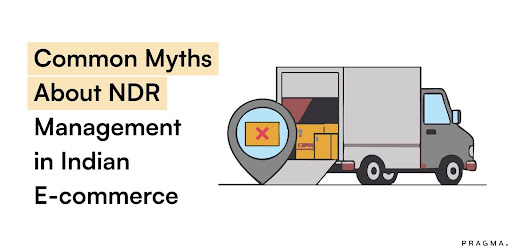An origin charge is a fee which carriers or logistics providers charge you for handling and processing cargo containing your orders at the shipment's origin point.
These charges cover every step in the shipping process from cargo collection, storage, and loading onto the shipping vessel or aircraft.
For brands looking to build their business by exporting products to international markets, you must understand what is an origin charge and how it impacts your aspiration of becoming a global brand.
It's because whether you're shipping electronics from Bangalore or textiles from Mumbai, you know that selling outside of the country costs significantly more than domestically.
And origin charges make up a major component of these costs
To know exactly what origin charges constitute, continue reading this guide. So before you plan to sell abroad, you’ll know what it’ll cost you.
Cut Your Reverse Logistics Costs—Automatically
Reduce shipping and reverse pickup expenses by 25% or more with Pragma RMS.
Automate partner selection, route optimization, and warehouse mapping for every return—so you save more, spend less, and scale faster.
Optimize Every Reverse Pickup, No Manual Intervention Needed.
Components of Origin Charges
Here are all the costs that fall under origin charges.

Terminal Handling Charges (THC)
Terminal Handling is a fee your terminal operators charge you for container handling, storage, movement, and maintenance.
The handling fee is also interchangeably referred to as OTHC (Origin Terminal Handling Charges) and is permanent for every shipment, but who pays for them depends on the incoterm selected.
Terminal handling fees vary from port to port and from terminal to terminal. Different cargo and container types are charged differently, mainly because of the specific methods of handling.
For example, Hazardous goods need extra careful attention for safe storage and monitoring, and often cost more.
Documentation Fees
Documentation charges cover the entire preparation and processing of necessary shipping documents, such as bills of lading, customs declarations, GST invoices, export licences, and certificates of origin.
These documents are essential for compliance and legal transit of goods.
The fee varies by destination country because some countries with stricter trade laws require more detailed documentation, which increases the associated fees.
And just as you work on reducing return to origin shipments domestically to limit losses, in international shipping you must also focus on accurate documentation to avoid rto.
Customs Clearance Charges
Customs clearance charges include the cost of processing export documentation, obtaining necessary permits, scanning charges, examination fees if required and ensuring compliance with export regulations.
Similar to the documentation fee, this, too, changes depending on the country your cargo is going to. In India, major ports like JNPT and Chennai often have more sort out shipping processes compared to smaller ports.
These customs clearance charges can be high for first-time exporters who may require additional documentation or face delays due to unfamiliarity with procedures.
Inland Transportation Costs
Inland transportation is the major component of origin charges, and it includes the cost of moving goods from your warehouse or manufacturing facility to the shipping port.
Now, depending on the distance, route conditions, and the type of transportation used to procure cargo from your facility, the final costs are determined.
So let's say the port is Vishapatnam, and your brand’s production site is in Delhi, and a second company that’s located in Chennai. Since Chennai is closer to the port, the cost of movement of cargo will be less compared to what it would cost from Delhi.
Road transport is flexible but may be more expensive for long distances, while rail transport can be cost-effective for bulk shipments but might require additional handling at rail terminals.
Impact of Incoterms on Origin Charges
Incoterms are internationally recognised rules used to define the responsibilities of sellers and buyers in international trade transactions.
These terms specify who is responsible for paying for and managing the shipment, insurance, documentation, customs clearance, and other logistical activities.

Group E - Departure Terms
- EXW (Ex Works)

Under EXW, the buyer is responsible for all costs and risks from the moment the goods are made available at the seller's (that is, you) location.
Your responsibility is to ensure that the cargo is packaged and ready for export and collection.
Group F - Main Carriage Unpaid
- FCA (Free Carrier)

Under FCA, the seller (that is, you) is responsible for delivering the goods to a planned place and transferring the risk to the buyer at that location. The responsibility for origin charges can vary depending on the specific agreement.
If the named place is your premises, you must load the goods. If it's elsewhere, the buyer arranges pickup.
- FAS (Free Alongside Ship)

FAS applies only to sea and inland waterway transport. Under his term, you must deliver goods alongside the vessel at the named port of shipment.
Origin charges under FAS cover inland transport to the port and export customs clearance, but exclude loading charges onto the vessel.
- FOB (Free on Board)

Under FOB, it's your role to pay for origin charges up to the point where goods are loaded onto the vessel.
It gives you control over the local shipping process and helps avoid unexpected charges.
Group C - Main Carriage Paid
- CPT (Carriage Paid To)

Under CPT, you are required to pay for carriage to the named destination, and the responsibility is transferred when goods are handed to the first carrier.
However, any additional costs at the destination become the buyer's responsibility.
- CIP (Carriage and Insurance Paid To)

CIP is similar to CPT but includes insurance coverage during the main carriage. You have to pay origin charges, main freight, and insurance premiums for high-value items.
- CFR (Cost and Freight)

CFR applies only to sea and inland waterway transport, where you pay origin charges and main freight, but excluding insurance.
In this term, the risk transfers when goods cross the ship's rail at the origin port, but you remain responsible for transport costs to the destination.
It works well for shipping non-fragile goods where buyers prefer to arrange their own insurance.
- CIF (Cost, Insurance and Freight)

Under CIF, you, as a seller, are responsible for most origin charges, as well as freight and insurance to the overseas destination port.
It gives your buyer complete cost transparency, but you must factor all these costs into your pricing to maintain profitability.
Group D - Arrival Terms
- DPU (Delivered at Place Unloaded)
DPU, you are responsible for all origin charges, main carriage, and destination handling until the goods are unloaded. Only import customs clearance comes under the buyer's responsibility.
- DAP (Delivered at Place)

Under DAP, you are responsible for delivering goods ready for unloading at the named destination. Also, you pay for all costs, including origin charges and main freight, except for import clearance and unloading.
Basically, in this term, buyers enjoy minimal logistics involvement, and it is on you to manage international logistics.
- DDP (Delivered Duty Paid)

Under DDP, you bear all the charges, including all origin charges, freight, insurance, destination charges, and import duties.
Buyers receive goods ready for immediate use with no additional logistics responsibilities.
Choosing the Right Incoterms for Your Business
The choice between different Incoterms will determine the significance of origin charges for your brand. Here is what you must consider.
Control vs. Convenience: Terms like EXW give your buyers control but require expertise. Terms like CIF or DDP do offer convenience, but at a higher cost.
Risk Management: Some terms transfer risk early (EXW, FCA) while others remain the seller’s responsibility for longer (CIF, DDP).
Cost Predictability: Buyers prefer terms where sellers handle origin charges for predictable pricing.
Market Expectations: Different markets have preferences, for example, European buyers often expect DDP, while US buyers may prefer FOB.
Strategies to Manage and Reduce Origin Charges
Here’s how you can manage origin charges without paying too high for selling in other countries.

Negotiating with Freight Forwarders
Freight forwarders often have standardised rates for different components of origin charges, which depend on region and mode of transportation.
Be sure to build long-term relationships with reliable forwarders to get better rates and service levels.
And remember when negotiating, focus on understanding the breakdown of all charges instead of just the headline rate.
Because many forwarders often quote attractive freight rates initially, but compensate for the gap with higher origin charges.
So always request detailed quotations that separate freight charges from origin charges to make accurate comparisons.
Consider negotiating annual contracts or volume-based pricing if your shipping volumes justify it.
Freight forwarders are often willing to offer better rates for guaranteed volumes, which can help cut down origin charge impacts on your overall shipping costs.
Consolidating Shipments
Freight consolidation is the process of shipping several shipments together in one container to save costs.
By consolidating shipments with other shippers, you reduce the cost of THC per unit.
For brands with smaller shipment volumes, consolidation helps you get affordable container rates and share origin charges among multiple shipments.
It works best for brands shipping to the same countries or using similar shipping schedules.
The only challenge is to coordinate the timing and ensure compatibility between different shipments.
Understanding and Planning for Charges
Proper planning is about accounting for seasonal variations in origin charges, especially during peak shipping periods when demand drives up costs.
Many ports adjust their charges annually, making it important for you to stay updated on current rate structures and so you can plan shipments accordingly.
International shipping, like domestic delivery, involves multiple cost components and potential complications.
Hence, understanding how origin charges work is as important as knowing what RTO charges are, because, unlike domestic shipping, returns in export business are much costlier, which can seriously impact your bottom line if not properly managed.
Common Mistakes and How to Avoid Them
- Many new brands exporting abroad focus solely on freight rates and overlook origin charges, which causes budget overruns and pricing errors. Always request detailed quotations with a breakdown of all charges to avoid surprises.
- Documentation errors in paperwork like invoices, packing lists, or certificates of origin might result in shipment delays, penalties, or additional charges. (Sugam Group). Double-check all required documents and use checklists with specific regulations for the destination country.
- Always clarify your incoterm responsibilities in writing and ensure all parties understand their obligations before you initiate the shipping.
- Rushing shipments to meet deadlines will trigger premium charges. Even delays in production, customs clearance, or transport might disrupt your schedules and increase costs.
- Without proper insurance, any damage or loss during the origin handling process will result in total loss with no recourse. So, always get appropriate marine cargo insurance for your shipments.
- When shipments do face issues during international transit, the challenge of resolving them is far greater than in domestic shipping. The documentation requirements and coordination needed in such cases are similar to what you face with domestic returns. It’s why knowing the steps to handle return-to-origin cases can help you build better approaches for international shipping.
To Wrap It Up
Origin charges are an unavoidable part of international shipping, but with proper knowledge of their components and how different Incoterms affect your responsibilities, you can budget accurately and choose the right terms for your brand needs.

FAQs (Frequently Asked Questions On What Is An Origin Charge)
What is the point of origin in shipping?
The point of origin in shipping refers to the location where your goods begin their journey, typically your warehouse or manufacturing facility.
What is the difference between shipping point and origin?
Shipping point and origin are the same—both refer to the starting location where goods are collected and begin their transport journey.
What is the importance of origin?
Origin determines your shipping costs, customs procedures, documentation requirements, and which regulations apply to your international shipments and export processes.
How do origin charges impact my overall shipping costs?
Origin charges—like handling, documentation, and inland transport—can make up a large portion of total shipping spend. Understanding and negotiating these charges helps minimize unexpected expenses.
What steps can brands take to reduce origin charges?
Brands can consolidate shipments, negotiate annual contracts or volume pricing with freight forwarders, and carefully compare breakdowns between freight and origin charges.
Which Incoterms help me control or minimize origin-related costs?
Terms such as FOB, EXW, and DDP shift responsibility for different origin charges. Choosing the right term based on control, convenience, and destination can reduce your logistics burden.
How does accurate documentation help prevent costly origin delays or returns?
Proper documentation prevents customs delays, penalties, and return-to-origin shipments, keeping costs under control and improving delivery success rates.
What are common mistakes that lead to higher origin charges—and how can I avoid them?
Missing paperwork, misjudging contract terms, and failing to request detailed breakdowns can drive costs up. Brands should audit each component and stay updated on rate changes.
Talk to our experts for a customised solution that can maximise your sales funnel
Book a demo




.png)